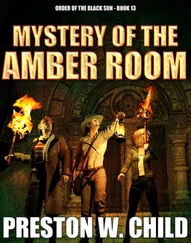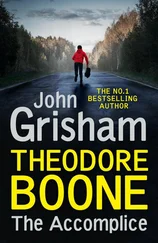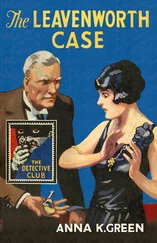‘THE DETECTIVE STORY CLUB is a clearing house for the best detective and mystery stories chosen for you by a select committee of experts. Only the most ingenious crime stories will be published under the THE DETECTIVE STORY CLUB imprint. A special distinguishing stamp appears on the wrapper and title page of every THE DETECTIVE STORY CLUB book—the Man with the Gun. Always look for the Man with the Gun when buying a Crime book.’
Wm. Collins Sons & Co. Ltd., 1929
Now the Man with the Gun is back in this series of COLLINS CRIME CLUB reprints, and with him the chance to experience the classic books that influenced the Golden Age of crime fiction.
COLLINS CRIME CLUB
An imprint of HarperCollins Publishers Ltd
1 London Bridge Street
London SE1 9GF
www.harpercollins.co.uk
First published in Great Britain by Edward Arnold 1909
Originally published in French as Le Mystère de la Chambre Jaune 1907
Introduction © John Curran 2018
Cover layout design © HarperCollins Publishers Ltd 2018
A catalogue copy of this book is available from the British Library.
This novel is entirely a work of fiction. The names, characters and incidents portrayed in it are the work of the author’s imagination. Any resemblance to actual persons, living or dead, events or localities is entirely coincidental.
All rights reserved under International and Pan-American Copyright Conventions. By payment of the required fees, you have been granted the non-exclusive, non-transferable right to access and read the text of this e-book on screen. No part of this text may be reproduced, transmitted, down-loaded, decompiled, reverse engineered, or stored in or introduced into any information storage and retrieval system, in any form or by any means, whether electronic or mechanical, now known or hereinafter invented, without the express written permission of HarperCollins.
Source ISBN: 9780008167035
Ebook Edition © August 2018 ISBN: 9780008167042
Version: 2018-03-14
Contents
Cover
Title Page
Copyright
Introduction
I. IN WHICH WE BEGIN NOT TO UNDERSTAND
II. IN WHICH JOSEPH ROULETABILLE APPEARS FOR THE FIRST TIME
III. ‘A MAN HAS PASSED LIKE A SHADOW THROUGH THE BLINDS’
IV. ‘IN THE BOSOM OF WILD NATURE’
V. IN WHICH JOSEPH ROULETABILLE MAKES A REMARK TO MONSIEUR ROBERT DARZAC WHICH PRODUCES ITS LITTLE EFFECT
VI. IN THE HEART OF THE OAK GROVE
VII. IN WHICH ROULETABILLE SETS OUT ON AN EXPEDITION UNDER THE BED
VIII. THE EXAMINING MAGISTRATE QUESTIONS MADEMOISELLE STANGERSON
IX. REPORTER AND DETECTIVE
X. ‘WE SHALL HAVE TO EAT RED MEAT—NOW’
XI. IN WHICH FRÉDÉRIC LARSAN EXPLAINS HOW THE MURDERER WAS ABLE TO GET OUT OF THE YELLOW ROOM
XII. FRÉDÉRIC LARSAN’S CANE
XIII. ‘THE PRESBYTERY HAS LOST NOTHING OF ITS CHARM, NOR THE GARDEN ITS BRIGHTNESS’
XIV. ‘I EXPECT THE ASSASSIN THIS EVENING’
XV. THE TRAP
XVI. STRANGE PHENOMENON OF THE DISSOCIATION OF MATTER
XVII. THE INEXPLICABLE GALLERY
XVIII. ROULETABILLE HAS DRAWN A CIRCLE BETWEEN THE TWO BUMPS ON HIS FOREHEAD
XIX. ROULETABILLE INVITES ME TO BREAKFAST AT THE DONJON INN
XX. AN ACT OF MADEMOISELLE STANGERSON
XXI. ON THE WATCH
XXII. THE INCREDIBLE BODY
XXIII. THE DOUBLE SCENT
XXIV. ROULETABILLE KNOWS THE TWO HALVES OF THE MURDERER
XXV. ROULETABILLE GOES ON A JOURNEY
XXVI. IN WHICH JOSEPH ROULETABILLE IS AWAITED WITH IMPATIENCE
XXVII. IN WHICH JOSEPH ROULETABILLE APPEARS IN ALL HIS GLORY
XXVIII. IN WHICH IT IS PROVED THAT ONE DOES NOT ALWAYS THINK OF EVERYTHING
XXIX. THE MYSTERY OF MADEMOISELLE STANGERSON
Footnote
Keep Reading …
The Detective Story Club
About the Publisher
WHAT greater recommendation can be accorded The Mystery of the Yellow Room than the whole-hearted approval of Hercule Poirot? In his 1963 case, The Clocks , he discusses, in Chapter XIV, his forthcoming magnum opus on detective fiction:
‘And here is The Mystery of the Yellow Room . That—that really is a classic! I approve of it from start to finish. Such a logical approach! … All through there is truth, concealed with a careful and cunning use of words … Everything should be clear at that supreme moment when the men meet at the angle of three corridors.’ He laid it down reverently. ‘Definitely a masterpiece …’
This, to some extent, reflects Agatha Christie’s own views, as expressed in An Autobiography. Discussing her reading influences in Part IV Chapter VII, she notes ‘… The Mystery of the Yellow Room , which had just come out, by a new author, Gaston Leroux, with an attractive young reporter as detective—his name was Rouletabille. It was a particularly baffling mystery, well worked out and planned …’ Writing of her early titles she notes that ‘ The Murder on the Links was slightly less in the Sherlock Holmes tradition, and was influenced, I think, by The Mystery of the Yellow Room . It had rather that high-flown, fanciful type of writing.’ Apart from its French setting, it is difficult to see what influence Leroux’s novel had on Poirot’s investigation of the murder of Monsieur Renaud at the Villa Geneviève in Merlin-sur-Mer. But a more telling similarity can be found in an early draft of the final chapter of The Mysterious Affair at Styles , in which Poirot, in a manner paralleling the Yellow Room ’s detective, explains the deductions which led to his identification of the murderer of Emily Inglethorp. At the request of her publisher she changed the manner of Poirot’s exposition, not only because of its possible similarity to the Leroux novel but also—despite its undoubted dramatic impact—because of its legal feasibility.
The Mystery of the Yellow Room first appeared in the French newspaper L’Illustration between September and November 1907, and in book form the following year. It was the first novel of a writer already well-known in France for his international newspaper journalism in L’Echo de Paris and Le Matin.
Gaston Leroux was born in Paris in May 1868 and completed his schooling in Normandy. He returned to Paris to study Law, graduating in 1889. Becoming disillusioned with the judicial system, he turned his not inconsiderable abilities to journalism, first as a theatre critic and court reporter for L’Echo . Subsequent, more significant, journalism at Le Matin included coverage of the infamous Dreyfus affair, the 1905 Russian Revolution and the 1906 eruption of Vesuvius; other stints included time in Morocco and Turkey. A further career-change saw him turn to fiction and The Mystery of the Yellow Room was the first of almost forty novels before his death in Nice in 1927.
The novel’s detective, Joseph Rouletabille, is one of the youngest in the pantheon of Great Detectives. The novel’s narrator is the self-effacing Jean Sainclair, who tells how he first met Rouletabille when the journalist was sixteen-and-a-half and already involved in solving a high-profile murder case, ‘the affair of the woman cut in pieces in the Rue Oberskampf’. His precocity impressed the editor of L’Epoque newspaper who offered him a post and, thereby, an entrée into the world of crime detection. At the time of The Mystery of the Yellow Room he is a mere eighteen! His real name is Joseph Josephine and his nickname—Rouletabille, because his head is as round as a bullet—was bestowed by his fellow-journalists and ‘his good humour enchanted the most severe tempered and disarmed the most zealous’ of them. We discover more about his antecedents—and the explanation of his rather peculiar real name—in the course of his second case, The Perfume of the Lady in Black (1908). (There are quite a few references throughout The Mystery of the Yellow Room to this follow-up novel.)
Читать дальше












